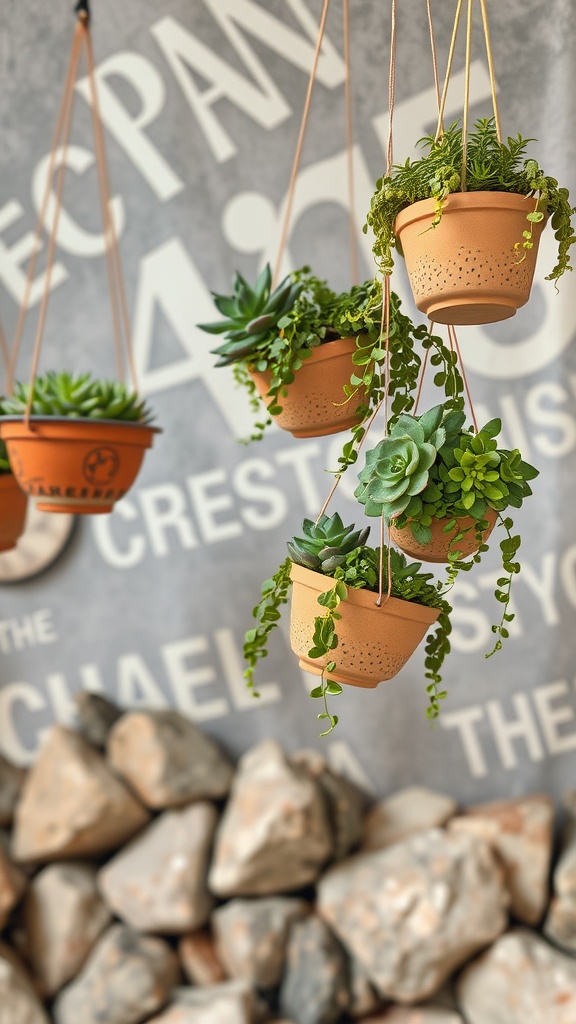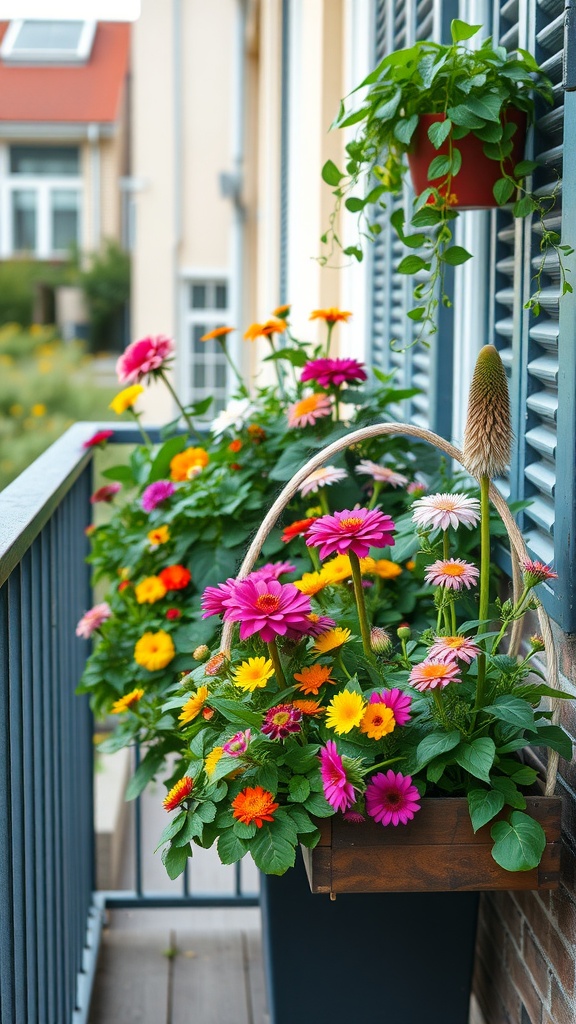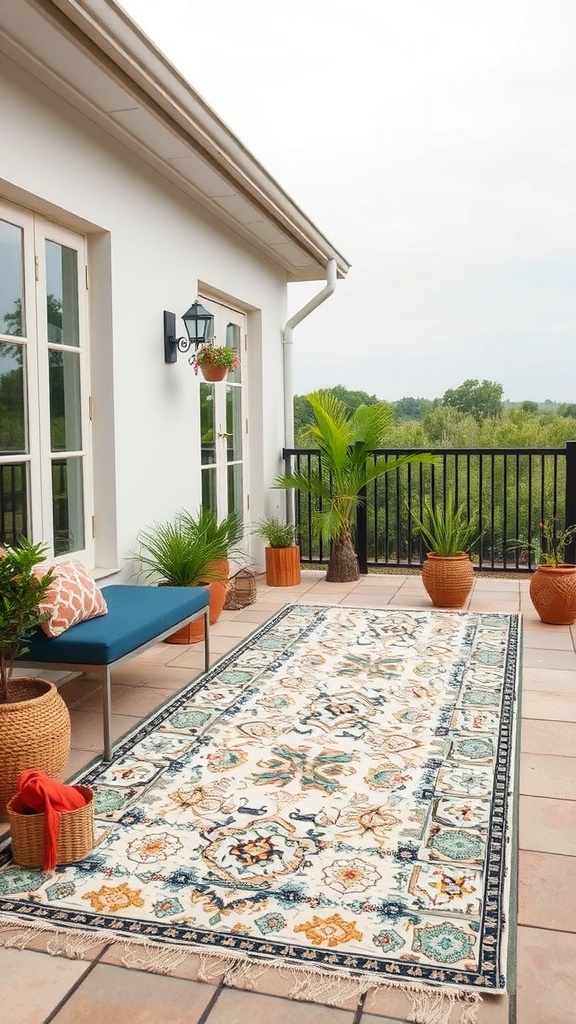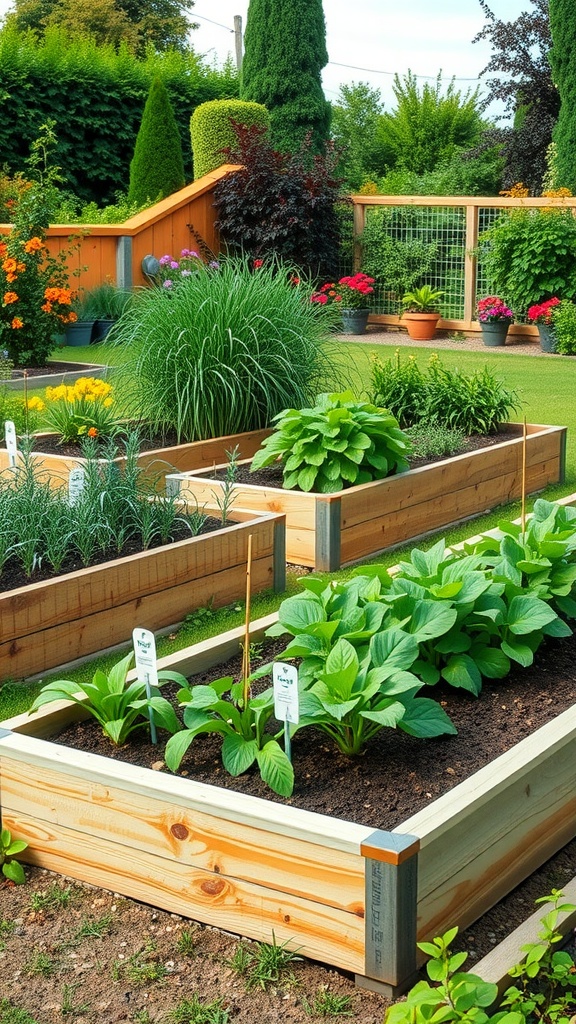If you’re looking to add some fresh flavors and a dash of green to your home, an indoor herb garden is the perfect solution. Indoor gardens not only provide access to fresh herbs year-round but also serve as beautiful décor pieces that can brighten up any space. Whether you’re a cooking enthusiast, a plant lover, or someone looking to improve their indoor air quality, growing herbs indoors is a great choice. Below are 15 creative and easy indoor herb garden ideas that will enhance both your home and your meals.
1. Window Sill Herb Garden
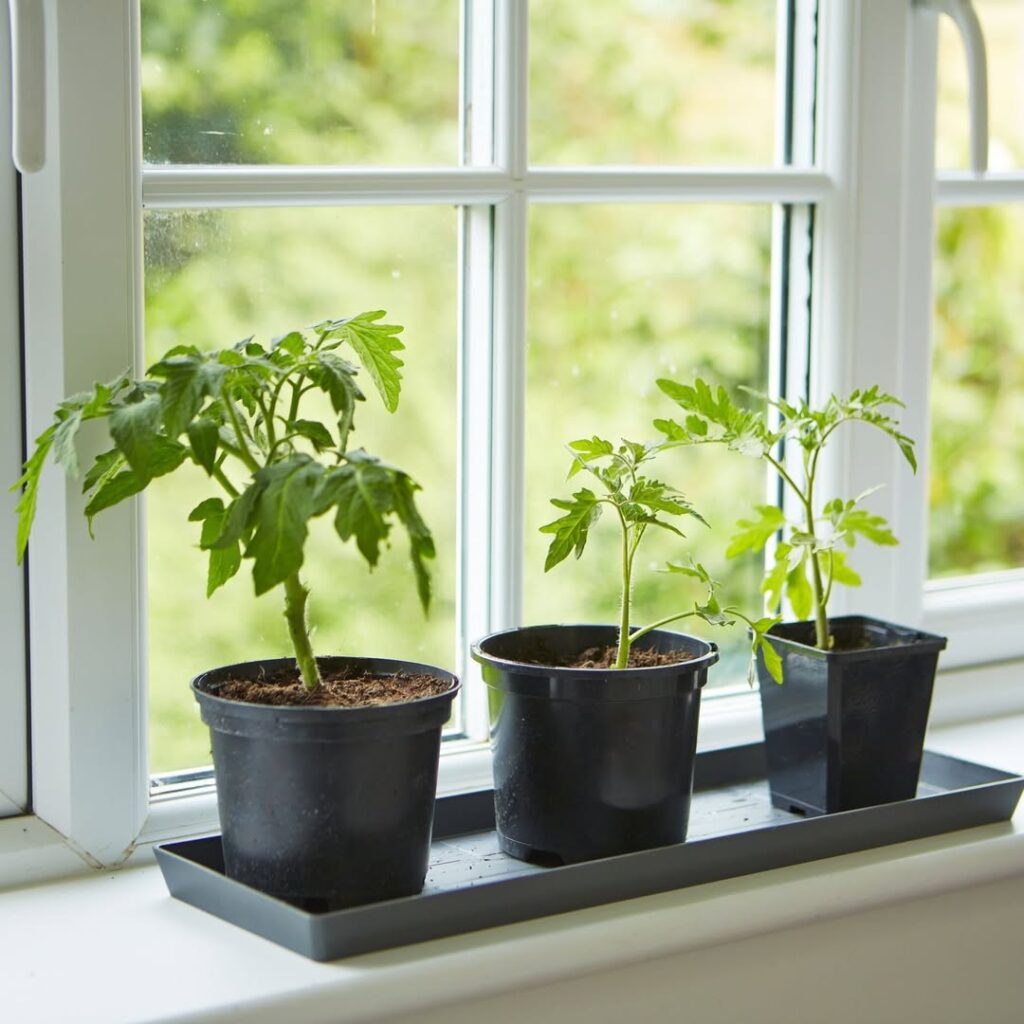
One of the most popular and easiest ways to grow herbs indoors is by using your window sill. A sunny spot with plenty of natural light will allow your herbs to thrive. For a chic and functional look, consider using small pots or containers that match your kitchen’s décor. You can grow a variety of herbs like basil, parsley, or mint, which do well with moderate sunlight.
Window sill gardens are ideal for small spaces, and they don’t require too much maintenance. Additionally, you can line the pots along the sill to create a visually appealing row of green. Choose plants that love sunlight to ensure they grow well, and rotate them regularly for even exposure. This minimalist and practical solution will help bring nature into your kitchen without taking up too much space.
To make your window sill herb garden more stylish, consider using a combination of rustic wooden pots, ceramic planters, or modern glass containers. You can also add a little decorative touch, like small pebbles or fairy lights, for added flair.
2. Hanging Herb Planters
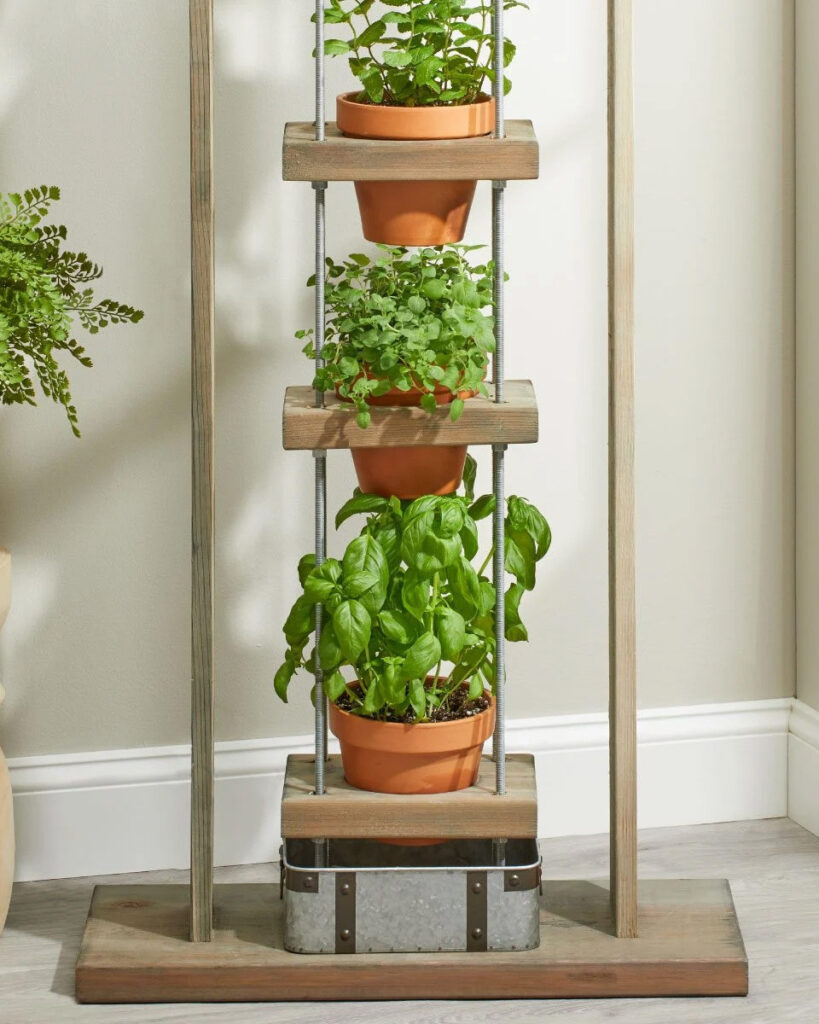
Hanging herb planters are a fantastic option if you’re short on counter space but still want to grow a variety of herbs indoors. These planters can be hung from the ceiling, mounted on the wall, or even suspended from a kitchen rack. By utilizing vertical space, you free up valuable countertop area, which is particularly useful in smaller kitchens.
You can find hanging planters in various materials, such as fabric, metal, or clay, to match your home’s aesthetic. Some planters come with multiple tiers, allowing you to grow different herbs in separate sections, which can add a unique touch to your kitchen decor. Additionally, this method ensures your herbs are close to the light they need, as hanging planters can be easily positioned near windows or under artificial grow lights.
A great way to make these planters more decorative is by choosing containers that complement your kitchen’s color scheme. Whether you prefer sleek, modern designs or rustic, vintage-inspired pots, hanging herb planters can be both practical and stylish.
3. Mason Jar Herb Garden
Source
Mason jars are a charming and rustic way to grow your indoor herbs. These jars are perfect for smaller herbs like thyme, basil, or cilantro, and they create an attractive, farmhouse-style look. You can set them on your kitchen counter or window sill for easy access.
The beauty of mason jar herb gardens lies in their versatility. You can attach them to a wooden board, hang them on a wall, or place them individually around your kitchen. To start, simply fill the jars with soil, plant your herbs, and make sure each jar has adequate drainage. For added visual appeal, you can decorate the jars with twine, burlap, or colorful paint to match your kitchen’s vibe.
Mason jar gardens also offer a great DIY project, as you can personalize the jars with labels or stickers for each herb. It’s a simple and affordable way to bring some greenery into your home.
4. Vertical Herb Garden

If you’re keen on making the most of your vertical space, a vertical herb garden could be the perfect solution. This type of garden is great for urban dwellers with limited space, as it allows you to grow multiple herbs in a compact, upright structure.
Vertical herb gardens come in various forms, such as wall-mounted shelves, repurposed pallets, or even hanging pockets. Choose a design that suits your style and available space. You can even create a vertical garden using recycled items like old wooden crates or shoe organizers for a sustainable, eco-friendly touch.
The key to a successful vertical garden is making sure each tier or pocket receives adequate sunlight. Place your vertical garden near a bright window, and use a rotating system to ensure all the herbs get an even amount of light. Vertical gardens also look aesthetically pleasing and can act as living artwork in your kitchen or dining room.
5. DIY Herb Garden on a Ladder
Source
A ladder herb garden is a creative and unique way to grow herbs indoors while adding a touch of charm to your space. By using an old wooden ladder or even a new one, you can create a multi-level herb garden that looks both rustic and modern at the same time.
To set up this type of herb garden, simply place small pots or containers on each rung of the ladder. You can choose a variety of herbs to place at different heights, which creates a visually appealing display. This DIY project is not only budget-friendly but also a great way to recycle old furniture and give it new life.
An added benefit of using a ladder is that it can be easily moved to different parts of your home, such as the kitchen, living room, or even your patio, depending on where you need it most. With the right arrangement, a ladder herb garden can become a statement piece in your home.
6. Hydroponic Herb Garden
Source
For those who want to try a more advanced and efficient way of growing herbs, a hydroponic herb garden is the way to go. Hydroponics is a soil-free method of growing plants that uses a nutrient-rich water solution to nourish the roots. This method can be done indoors using specially designed hydroponic systems that include everything from basic setups to fully automated growing systems.
Hydroponic herb gardens offer several benefits, including faster growth, cleaner plants, and less mess. They also work well in small spaces, as they don’t require large pots of soil. The system is also customizable, allowing you to grow a wide variety of herbs such as mint, basil, and dill.
The best part? A hydroponic garden requires less water than traditional soil gardening, making it an eco-friendly choice. You can easily find hydroponic kits that include everything you need to get started, making this a beginner-friendly gardening method.
7. Herb Garden in a Wooden Tray
Source
If you want a simple yet attractive way to grow your herbs indoors, consider using a wooden tray as your garden base. This rustic option adds a touch of warmth to any space and can be easily customized to suit your décor.
To create a herb garden in a wooden tray, simply place small pots of your chosen herbs inside the tray. You can use a single tray or multiple trays to create a more layered look. Wooden trays are ideal for small or medium-sized herbs like rosemary, parsley, or chives. They are also lightweight, which makes them easy to move around as needed.
Adding decorative touches such as pebbles, small rocks, or burlap fabric will make your herb garden look even more charming. Wooden trays are versatile and can be used as standalone décor pieces on your kitchen counter, dining table, or windowsill.
8. Self-Watering Herb Garden
Source
For the busy home cook or gardener, a self-watering herb garden is an excellent solution. These systems are designed to ensure that your herbs receive a consistent amount of water, eliminating the need for frequent watering. Many self-watering garden kits are available that include built-in reservoirs and wicking systems that deliver water to the roots as needed.
Self-watering herb gardens can be placed on your countertop, windowsill, or balcony, depending on where you have access to adequate light. The built-in system ensures that the herbs remain hydrated without the risk of over-watering, which can be harmful to plants.
These systems come in a variety of designs, from simple, small pots to larger multi-tiered planters, so you can choose the best one for your space. Additionally, some self-watering systems come with features like automatic grow lights and timers, making them highly efficient and low-maintenance.
9. Repurposed Spice Rack Garden
Source
A repurposed spice rack is a clever way to grow herbs indoors while also organizing your spices in an accessible, stylish way. You can use an old spice rack or purchase a new one that fits your kitchen space. By swapping out traditional spice jars for small herb plants, you create a functional and aesthetically pleasing display.
The rack’s compact design makes it easy to fit into narrow spaces like your kitchen counter, cabinet, or pantry. You can grow a variety of herbs like oregano, thyme, or cilantro and have them readily available for use in your cooking.
To keep your plants healthy, make sure the spice rack is placed in a location with plenty of light. Consider adding small labels to each jar or pot for easy identification, and choose plants that match your cooking needs.
10. Terrarium Herb Garden
Source
Terrariums are a wonderful way to grow herbs indoors while adding a touch of nature to your home. These glass containers can be used to create a small, self-contained ecosystem that requires minimal maintenance. Herbs like basil, thyme, and mint can thrive in a terrarium, as long as the container has proper drainage and is placed in a well-lit spot.
You can choose from various types of terrariums, including open, closed, or hanging models, depending on the amount of light your herbs need. Terrariums also work well as décor pieces, allowing you to customize the look by adding decorative stones, moss, or tiny figurines.
Terrariums offer the perfect balance of functionality and beauty, making them ideal for those looking to grow herbs indoors while enhancing their home’s ambiance.
11. Countertop Herb Garden
Source
For those with ample kitchen counter space, a countertop herb garden is a simple yet effective way to grow herbs indoors. You can use a variety of containers, such as ceramic pots, mason jars, or wooden crates, to hold your plants. This method allows easy access to your herbs while cooking and can be a beautiful addition to your kitchen décor.
A countertop herb garden works well for medium-sized herbs like rosemary, oregano, or basil. Choose containers that complement your kitchen’s style, whether you’re aiming for a rustic look with terracotta pots or a sleek, modern design with metal or glass containers. Be sure to place your garden in a location that receives plenty of natural light—near a south-facing window is ideal.
To add a personal touch, you can paint or decorate the pots with custom labels or fun patterns. A countertop herb garden can be an eye-catching and functional way to bring the outdoors inside.
12. Smart Herb Garden
Source
If you’re looking to take your indoor herb garden to the next level, a smart herb garden could be just what you need. These high-tech systems use LED lights, automated watering, and built-in sensors to monitor your plants’ growth and ensure optimal conditions. Many smart garden kits come with everything you need to get started, including herb seeds, soil, and containers.
Smart herb gardens are perfect for busy individuals who want fresh herbs without the hassle of constant maintenance. These systems are designed to be user-friendly, with many offering smartphone apps that allow you to track your plants’ progress and adjust settings from anywhere.
Although they require an initial investment, smart herb gardens are efficient and effective, making them a great choice for anyone who wants to grow herbs indoors with minimal effort. Plus, the futuristic design adds a sleek, modern touch to your kitchen or home office.
13. Shelf Herb Garden
Source
A shelf herb garden is another great way to incorporate greenery into your indoor space. By using a narrow shelf or a wall-mounted unit, you can create a vertical herb garden that doesn’t take up much floor space. This is an excellent choice for apartments or homes with limited room.
To create a shelf herb garden, choose a shelf that has enough depth to hold a variety of pots. Arrange the herbs according to their sunlight needs, placing the sun-loving plants at the top and the shade-tolerant ones lower down. You can use traditional plant pots, or get creative with containers like tin cans, teacups, or small baskets to add personality to your garden.
The beauty of this setup is that you can design it to fit any size space, from a small kitchen nook to a large living room wall. A shelf herb garden adds a unique touch of nature and can even double as a stylish decoration piece.
14. Grow Light Herb Garden
Source
If your home doesn’t get much natural light, don’t worry! A grow light herb garden is an excellent solution. These systems use artificial lights designed to mimic the sun’s rays, providing your herbs with the necessary light for healthy growth. You can use a grow light setup for a single herb or create an entire indoor garden with multiple plants.
Grow lights come in various styles, from small desk lamps to larger freestanding units. Some grow lights even have adjustable arms, so you can position them closer to your herbs for better light coverage. They are an essential tool for growing herbs indoors, especially if you’re limited by the natural light in your space.
A grow light herb garden offers more flexibility in terms of placement—you can position it in any room, even in areas with little or no direct sunlight. By creating an optimal lighting environment for your plants, you can enjoy fresh herbs all year long.
15. Herb Garden in an Upcycled Wooden Box
Source
For an eco-friendly and rustic indoor herb garden, consider using an upcycled wooden box. This repurposed container gives your herbs a charming, vintage look while also contributing to sustainability. You can use old wooden crates, wine boxes, or even pallet wood to create the perfect home for your plants.
Fill the box with small pots or directly with soil, and plant your favorite herbs. You can grow a wide variety of herbs like thyme, parsley, and rosemary, and the wooden box will help retain moisture, preventing your herbs from drying out too quickly. You can also add a layer of decorative rocks or pebbles on top of the soil for a polished finish.
The beauty of using an upcycled box is that it adds a unique, eco-friendly flair to your home. This DIY project is perfect for anyone who loves the charm of rustic décor and wants to make a sustainable choice while growing herbs indoors.
Conclusion
Indoor herb gardens offer a fantastic way to enhance your home, improve your cooking, and even boost your well-being. Whether you’re limited by space, light, or time, there is a solution to suit your needs. From simple countertop gardens to advanced hydroponic systems, these 15 indoor herb garden ideas prove that you can grow fresh herbs in a variety of ways, no matter your home’s layout.
By choosing the right containers, positioning your herbs in well-lit areas, and selecting the right gardening system for your lifestyle, you can create a vibrant, thriving indoor herb garden. Plus, you’ll have the satisfaction of using your homegrown herbs in delicious meals, adding a fresh, flavorful touch to your cooking.
No matter which idea you choose, growing your own herbs indoors brings nature inside and allows you to enjoy the benefits of homegrown ingredients year-round. So, gather your favorite herbs, pick the ideal garden setup, and start cultivating your own indoor oasis today!
